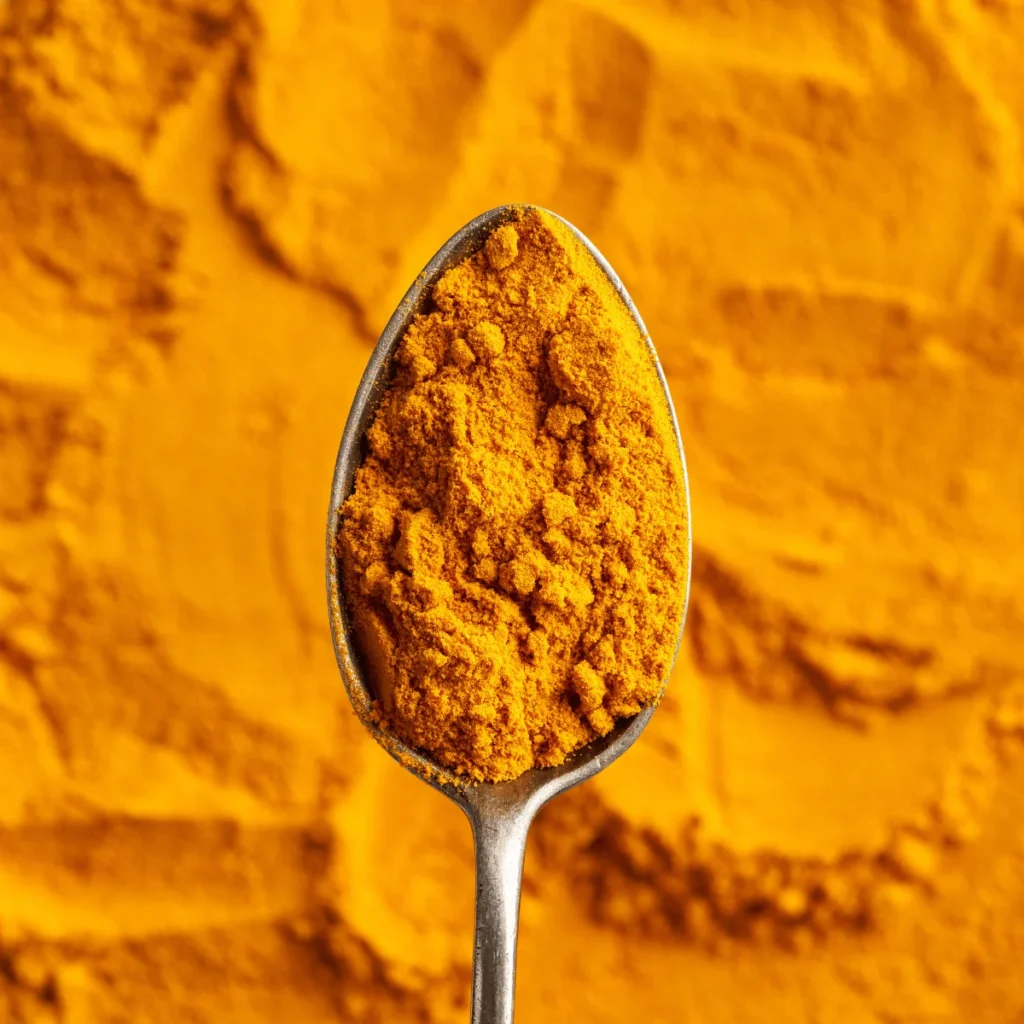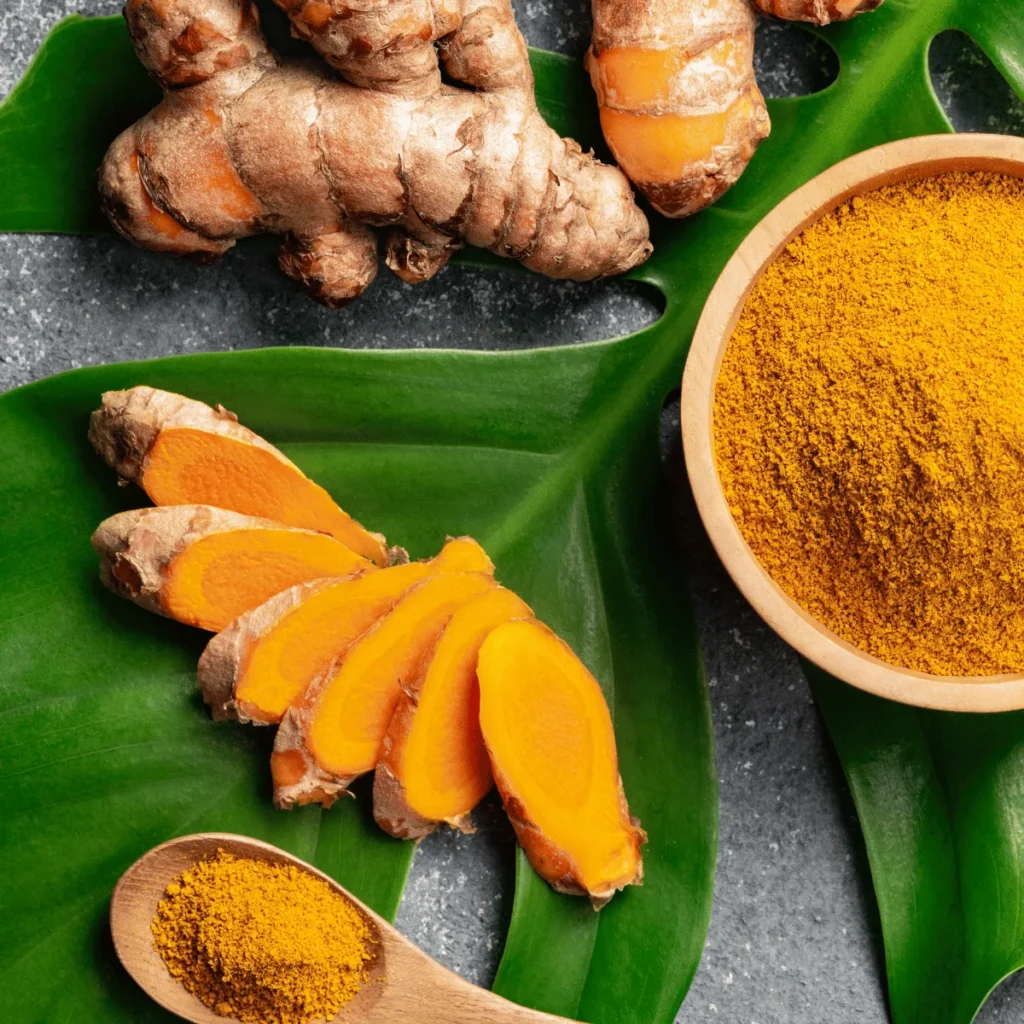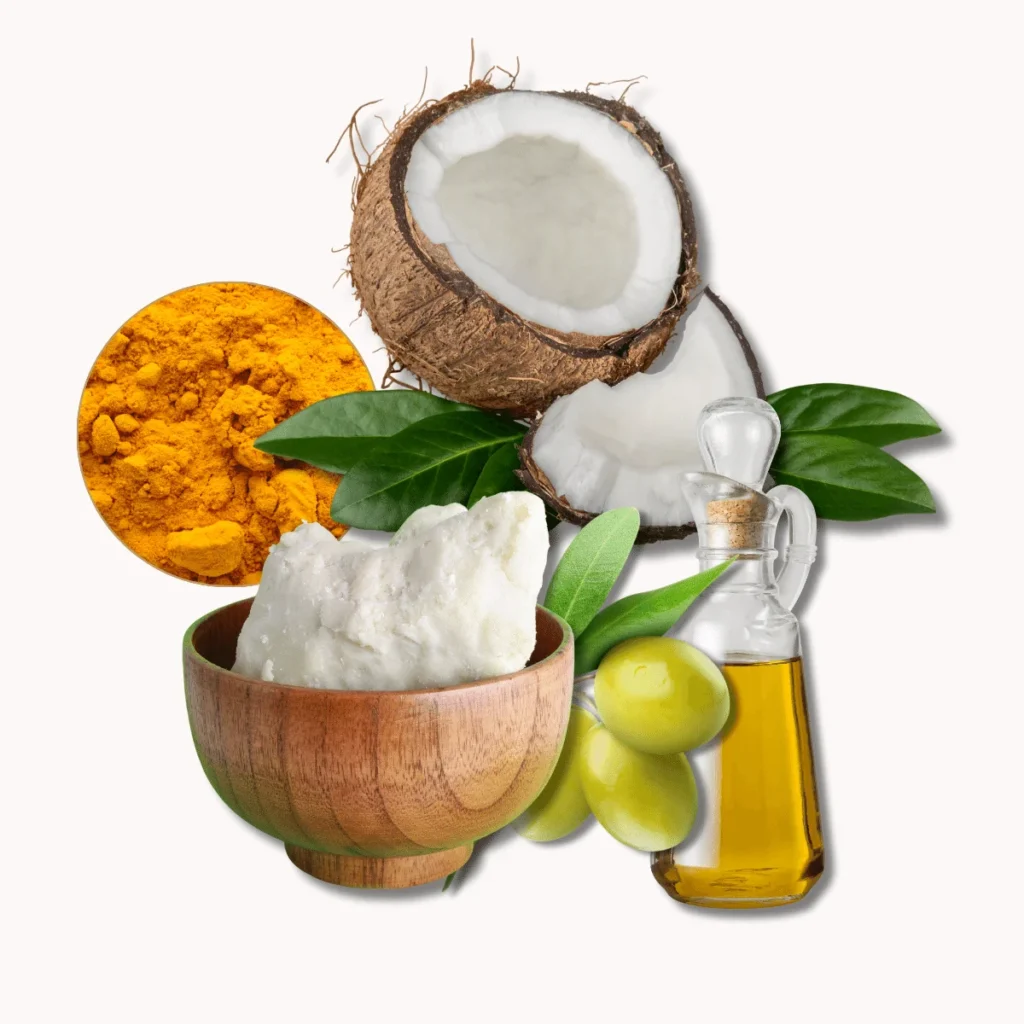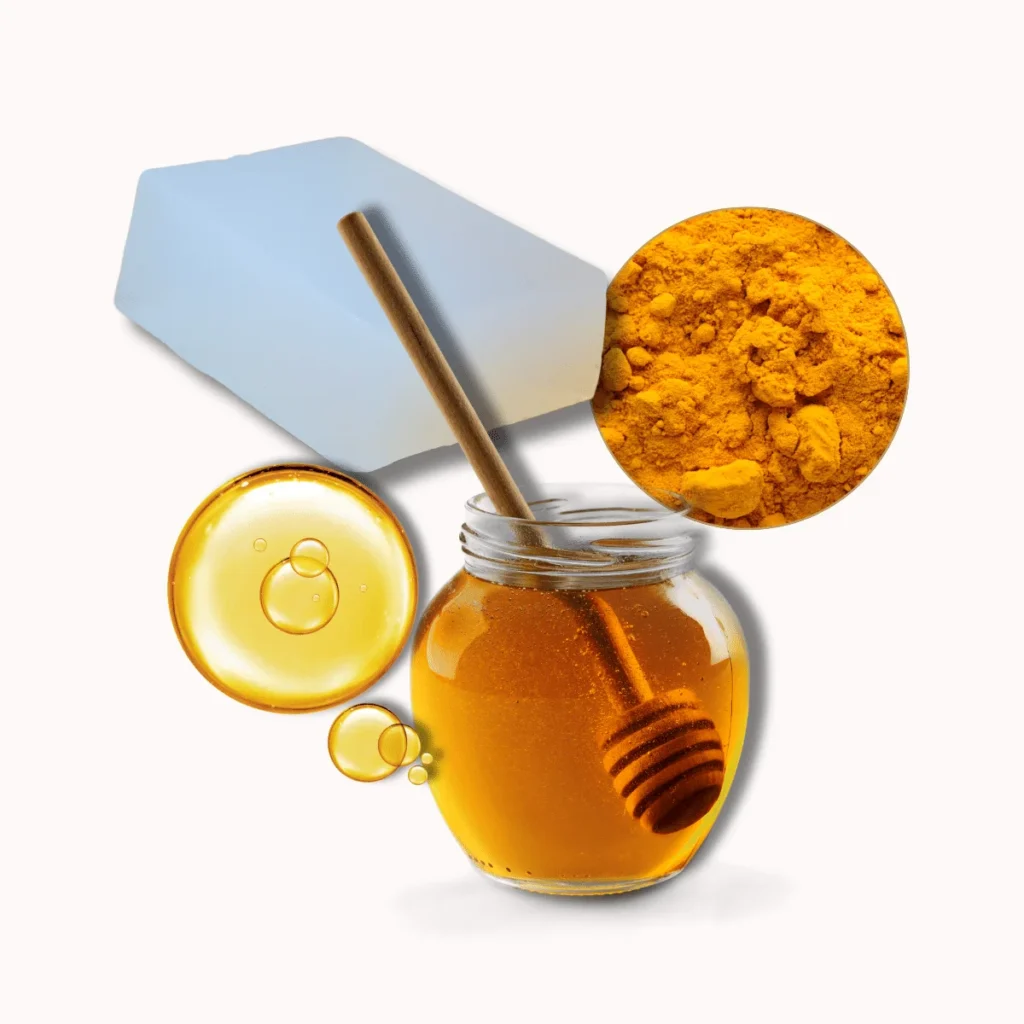Heads up! We may use affiliate links in this post. You'll never pay more, but we might earn a small commission if you buy - thanks for supporting us! See our full disclosure here.
Looking to spice up your skincare routine? Well, you’ll love these turmeric soap recipes that will do just that!
This post is a helpful step-by-step guide to making soap using turmeric as the main ingredient.
I’m serving up not one, not two, but three fabulous homemade turmeric soap recipes that will leave your skin thanking you with every lather.
MORE POSTS YOU’LL LOVE:
But first, let’s talk turmeric. This golden spice isn’t just for spicing up your curry; it’s also a powerhouse when it comes to skincare.
Turmeric soap has many antioxidant properties that fight off free radicals, promoting skin health and that natural glow we all crave.
And if you’re battling acne, turmeric’s anti-inflammatory properties might just be your new BFF.

Now, I know what you’re thinking. “But won’t it stain my skin?” Don’t stress!
When used in moderation and properly mixed into soap, turmeric won’t leave you looking like you just rolled in a pile of saffron.
Instead, it’ll leave your skin feeling refreshed, rejuvenated, and uber-radiant.🌞
So before we jump into the recipes, here’s a little more background about turmeric…
What Is Turmeric?

Turmeric is a root derived from the Curcuma longa plant, which belongs to the ginger family.
The root of the turmeric plant is harvested, cleaned, dried, and ground up into a vibrant yellow-orange fine powder, creating that gorgeous golden spice we all know and love.
It’s been hailed for its medicinal properties for nearly 4,000 years, especially in Ayurvedic medicine, thanks to a little compound called curcumin, which packs a serious punch when it comes to antioxidants and anti-inflammatory goodness.
Turmeric Soap Benefits
Now, let’s talk about turmeric soap benefits for the skin!
- Antioxidant Powerhouse: Turmeric is rich in compounds like curcuminoids, which possess potent antioxidant properties. These antioxidants help combat oxidative stress caused by free radicals, thereby protecting the skin from premature ageing and maintaining its youthful appearance.
- Anti-Inflammatory Properties: One of the most celebrated aspects of turmeric is its remarkable anti-inflammatory properties, primarily attributed to curcumin. Inflammation is a common denominator in various skin issues, including acne, eczema, and psoriasis. By reducing inflammation, turmeric can alleviate redness, swelling, and discomfort associated with these conditions, promoting healthier, calmer skin.
- Acne-Fighting Abilities: Turmeric’s antimicrobial and anti-inflammatory properties make it a formidable ally in the battle against acne. Scientific studies have shown that it helps unclog pores, reduce bacterial growth, and soothe inflamed skin, making it an effective natural remedy for acne-prone skin.
- Brightens Complexion: Turmeric has been traditionally used to enhance skin complexion and impart a natural glow. Its ability to inhibit melanin production can help fade dark spots, hyperpigmentation, and blemishes, leading to a more even-toned complexion.
- Supports Skin Healing: Turmeric facilitates the skin’s natural healing process by promoting cell regeneration and tissue repair. Whether you’re dealing with minor cuts, abrasions, or more serious skin conditions, studies have shown that incorporating turmeric into your skincare routine can expedite the healing process and minimise scarring.
- Suitable for Sensitive Skin: Despite its potent properties, turmeric is generally well-tolerated by most skin types, including sensitive skin. However, it’s essential to perform a patch test before using turmeric-based products extensively, especially for individuals with hypersensitive skin or allergies.
3 Homemade Turmeric Soap Recipes
Before we begin, please note, that wearing gloves while making soap is highly recommended, especially when working with ingredients like lye.
Lye can be caustic and may cause irritation or burns if it comes into contact with your skin.
Ok! Let’s get into the three easy-peasy turmeric soap recipes.
1. Turmeric Delight

Ingredients:
– 2 cups melt-and-pour soap base (clear or white)
– 1 cup coconut oil
– 1 cup olive oil
– 2 tablespoons turmeric powder
– 10-15 drops of your favourite essential oil (optional)
Process:
1. Melt the Soap Base: Cut the melt-and-pour soap base into small cubes for easier melting. Place the cubes into a microwave-safe bowl or double boiler. Heat the soap base until completely melted, stirring occasionally.
2. Add Other Ingredients: Once the soap base is melted, add the shea butter and coconut oil, stirring until they are fully melted and combined.
3. Incorporate the Oils and Turmeric: Add the olive oil and turmeric powder to the melted mixture. Stir well to ensure the turmeric is evenly distributed throughout the soap base.
4. Add Essential Oils: If you’re using essential oils, add 10-15 drops of your favourite essential oil and mix thoroughly.
5. Pour into Moulds: Carefully pour the mixture into soap moulds.
6. Cool and Harden: Allow the soap to cool and harden completely, which may take several hours.
7. Remove from Moulds: Once they are fully set, pop them out. Voila! You’ve got yourself a turmeric delight.
✅QUICK TIP: Aluminum is reactive with certain chemicals, particularly those found in soap-making ingredients like lye (sodium hydroxide). Use non-reactive utensils like stainless steel or plastic when making soap to avoid any unwanted reactions.
2. Golden Glow

Ingredients:
– 2 cups glycerin soap base (melt-and-pour)
– 1 tablespoon turmeric powder
– 1 tablespoon manuka honey
– 10-15 drops of your favourite essential oil (optional)
Process:
1. Melt the Glycerin Soap Base: Cut the glycerin soap base into small cubes for easier melting. Place the cubes into a microwave-safe bowl or double boiler. Heat the soap base until completely melted, stirring occasionally.
2. Incorporate Turmeric and Honey: Once the glycerin soap base is melted, stir in the turmeric powder and manuka honey until well combined.
3. Add Essential Oils: If you’re using essential oils, add 10-15 drops of your favourite essential oil and mix thoroughly.
4. Pour into Moulds: Carefully pour the mixture into soap moulds.
5. Cool and Harden: Allow the soap to cool and harden completely, which may take several hours.
6. Remove from Moulds: Once the soap is fully set, remove it from the moulds and get ready to bask in your golden glow!
📝NOTE: After pouring your fabulous melt-and-pour turmeric soap concoctions into their moulds, you’ll want to give them some time to set and firm up.
Typically, melt-and-pour soap recipes will take anywhere from 1 to 3 hours to fully set at room temperature. However, this can vary based on factors like room temperature, humidity, and the specific soap base you’re using.
To be on the safe side, I’d recommend giving your soap moulds a good 2 to 3 hours to ensure they’re completely solid before you excitedly pop them out. You’ll know they’re ready when they’re firm to the touch and no longer sticky or pliable.
3. Sunshine Suds

Ingredients:
– 2 cups goat milk soap base (melt-and-pour)
– 1 tablespoon turmeric powder
– 1 tablespoon dried calendula petals (for an extra pop of colour and skin-soothing goodness)
– 10-15 drops of your favourite essential oil (optional)
Process:
1. Melt the Goat Milk Soap Base: Cut the goat milk soap base into small cubes for easier melting. Place the cubes into a microwave-safe bowl or double boiler. Heat the soap base until completely melted, stirring occasionally.
2. Incorporate Turmeric and Calendula: Once the goat milk soap base is melted, stir in the turmeric powder and dried calendula petals until well combined.
3. Add Essential Oils: If you’re using essential oils, add 10-15 drops of your favourite essential oil and mix thoroughly.
4. Pour into Moulds: Carefully pour the mixture into soap moulds.
5. Cool and Harden: Allow the soap to cool and harden completely, which may take several hours.
6. Remove from Moulds: Once the soap is fully set, remove it from the moulds and enjoy bathing in sunshine suds!
FAQs
Q. Can We Apply Turmeric On Our Skin Daily?
Yes, you can use turmeric on your skin daily, but with a word of caution.
While turmeric offers numerous benefits for the skin, including its anti-inflammatory and antioxidant properties, it can also cause staining or irritation in some individuals, especially when used in high concentrations or on sensitive skin.
To avoid any adverse reactions, it’s best to start with small amounts and patch-test before applying it to larger areas.
Also, consider mixing turmeric with other ingredients like yoghurt, honey, or aloe vera gel to mitigate its staining potential and enhance its skincare benefits.
Q. Does Turmeric Lighten Skin?
Turmeric is often touted for its skin-brightening properties, thanks to its ability to inhibit melanin production and reduce hyperpigmentation.
However, its lightening effects may vary from person to person, and results may not be immediate.
Consistent use of turmeric-based skincare products, combined with a well-rounded skincare routine and sun protection, can help improve skin tone over time.
Keep in mind that individual skin types and conditions may respond differently to turmeric, so it’s essential to monitor your skin’s reaction and adjust your usage accordingly.
Q. Does Turmeric Remove Dark Spots?
Turmeric’s anti-inflammatory and antioxidant properties can help fade dark spots and improve overall skin tone.
Its active compound, curcumin, has been shown to inhibit melanin synthesis and reduce the appearance of hyperpigmentation caused by factors like sun exposure, acne scars, or hormonal changes.
However, like with any skincare ingredient, results may vary depending on factors such as the severity of the dark spots, consistency of use, and individual skin response.
Incorporating turmeric into your skincare routine, along with other targeted treatments like exfoliation and vitamin C serums, can help diminish dark spots over time and promote a more even complexion.
Q. Do These Soaps Need To Be Cured First?
While some handmade soaps benefit from a curing period to enhance their longevity and lather, melt-and-pour soap recipes like the ones we’ve whipped up with turmeric are usually good to go straight out of the mould.
That’s the beauty of melt-and-pour soap bases—they’re pre-saponified, meaning the saponification process (where oils and lye transform into soap) has already occurred. So, once your turmeric soap bars have set and hardened, they’re essentially ready for action.
However, if you’re feeling particularly patient (or just enjoying the anticipation), you can absolutely let your turmeric soap bars cure for a bit before diving in.
Simply pop them out of the moulds, place them on a drying rack or parchment paper, and let them sit in a cool, dry place for 1 to 2 weeks. This can help any excess moisture evaporate, resulting in a firmer, longer-lasting bar.
But hey, if you’re itching to get that turmeric goodness on your skin ASAP, go ahead and lather up! Your skin will still reap all the wonderful benefits of turmeric, whether you give your soap bars a curing period or not!





